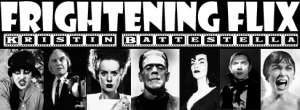
The Addams Family Debuts with Quips and Quirky Good Fun
by Kristin Battestella
Neat.
Sweet.
Petite.
Thirty-four half hour black and white episodes from the 1964-65 television season introduce audiences to The Addams Family – Charles Addams’ lovable cartoons made flesh thanks to cigar loving Gomez (John Astin), his literally smoking wife Morticia (Carolyn Jones), their macabre children Wednesday (Lisa Loring) and Pugsley (Ken Weatherwax), electric Uncle Fester (Jackie Coogan), spunky Grandmama (Blossom Rock), and deadpan butler Lurch (Ted Cassidy). Of course, that’s not to mention Thing, Cousin Itt, Cleopatra, and many more quirky pets, relatives, and memorable circumstances brimming with quips, catchphrases, and ghastly good times. Snap your fingers now!
The Addams Family gets right to the spooky fun as Thing reaches from the mailbox in the “The Addams Family Goes to School” premiere. Truant officers knocking on the door are met with a roaring rug, a two headed tortoise statue, and more “we like it, it’s so nice and gloomy” décor – providing the viewer a shrewd tour of who is who or what, as it were. Fortunately, The Addamses are the ones who find the freaked school board members “weird.” Initially, they encourage the idea of a regular school. However, The Addamses become appalled by the violent Grimm’s Fairy Tales being read in the classroom and try to make the school officials see the light with a stretch on the rack to calm some nerves. While this macabre but wholesome charm is expected today, The Addams Family subtly makes its moral question of the establishment early in the series. The Addamses pick losing candidates like Adlai Stevenson, and Gomez goes overboard with family posters and campaign songs in “Gomez the Politician.” He’s completely unaware the supposedly respectable nominee doesn’t want their warped help, yet The Addamses are willing to tolerate their white picket fence neighbors in “The Addams Family Tree.” They assure the children remain modest, don’t flaunt their wealth, and have tarantula gifts on hand when Wednesday and Pugsley attend a birthday party. The Addams Family may ponder them writing rebuttal letter or turning the other cheek, but make no mistake, this family is ready to defend their honor when called “kooks.” Rather than outsider plots taking over, it’s more fun to see The Addams gang face normal confrontations or everyday worries with their own peculiar elan for the twist – with talk of duels, Aunt Blemish, Grandpa Slurp, Salem family history, and your otherwise average skulduggery.
“Halloween with the Addams Family” brings the whole clan out with sharp pumpkin carving knives, bubbling potion punches, and worm cookies – even the kids are dressed in apparently normal costumes to “scare the wits out of people.” Of course, the innocent, bobbing for crabs family thinks that bank robbers are just getting money for trick or treat instead of apples. They are going all out for their favorite holiday, but The Addamses have never heard of hide and seek and find it too strange a game. Gomez and Morticia spa Pugsley’s pet octopus in the bird bath and hope an outdoor introduction happens in “The New Neighbors Meet the Addams Family.” The newlyweds next door could be imaginative Addams folk thanks to their giant cedar chest, but when they turn out to be straight laced and high strung, The Addamses are still willing to be friendly. Inexplicably, that two headed turtle as a housewarming gift and Uncle Fester popping up from a trap door in the floor just to say hello don’t go over too well, leaving our eponymous family once again confused as to why their good deeds and generous intentions go awry. Fortunately, Grandmama’s love dust and Morticia’s makeover do aide the jilted Cousin Melancholia in “Morticia the Matchmaker.” Rather than a fun name reference or preposterous ancestral quip, it’s great to see another family member come to the welcoming Addamses for a little romantic help – a guest who’s one of their own for Gomez to snag an unwitting business contact or reluctant local lawyer. Pugsley’s super antenna and radio gizmos, however, attract the authorities for “The Addams Family Meets the Undercover Man” when overheard references to a roaring lion and a man eating houseplant are mistaken for suspicious code talk. Reluctant postman decoys and frightened undercover plumbers may seem cliché, but it’s bemusing to see how the information on The Addams Family comes from listening to the radio or waiting for the snail mail. Each episode always ends with a post-Addams flown the coop letter or a gone crazy mention which the family always takes as a delightful vacation or adventure.
Unfortunately, things aren’t so rosy when Morticia and Fester think Gomez’s business has gone belly up in “Morticia, the Breadwinner.” Grandmama strikes out working at a beauty salon, the children’s “Henbane on the Rocks” drink stand gets sued, and Fester shockingly becomes an escort for rich widows. Morticia tries to give tango and fencing lessons without any students, and Thing pitches in selling pencils for five cents a piece – accumulating a whopping $1.30 wages among them. Naturally, the local bazaar fears receiving shrunken heads and headless dolls in “Morticia’s Favorite Charity.” However, the titular clan finds it tough to part with their treasures, and Fester’s reluctance versus Morticia’s enthusiasm make for some interesting debates. They want to give something important rather than get rid of things, but their sentiments backfire in an ironic bidding war for their beloved donations. Upside down gags accent the pros and cons as Gomez dictates a harsh letter, Morticia tries for diplomacy, and Fester threatens voodoo doll violence when the city evicts them to build a freeway in “Progress and the Addams Family.” There’s no caves, swamps, or quicksand on the new lot where the family intends to move their entire house, but they agree to be fair neighbors regardless of who those next door are. Of course, it is the city commissioner who’s willing to have the freeway rerouted if it means The Addamses won’t be his new neighbors. Fester also fears the worst when a magazine article in “Winning of Morticia Addams” says that couples who are too happy must really be miserable – so he enlists the entire family to make the couple fight “for their own good.” The Addams Family should have had more Grandmama and Uncle Fester led episodes, but this opposite focus with duels and dilemmas is a fun bonus to end the season.

Though much beloved, The Addams Family is of its time and may not always be friendly for any super young impressionable viewers thanks to talk of dynamite, hangings, cannons, and gunfire as games. The adults smoke a hookah and use inappropriate terms such as spook and midget alongside gypsy masquerades, American Indian racism, and Eskimo giver jokes mentioning a totem pole gift from Cousin Nanook. The Addams Family meanders in the first half of the season with run of the mill misunderstandings, leaving the you’ve seen one, you’ve seen them all plots over-reliant on The Addamses quirky chemistry. So many cool name dropped family members and cartoon references get lost amid conflicting anecdotes and too many clichés in a row, and derivative sitcom plots or thin television stock tropes clutter the family charm. Instead of the local ladies invited to tea clutching their pearls at haunted house compliments, “Morticia Joins the Ladies League” wastes time over a gorilla on the loose. Pedestrian clichés and put on Eastern European accents in “The Addams Family Meets the VIPs” hamper the zany Addams display, and “The Addams Family Meets a Beatnik” looses its cool between The Addamses being unfamiliar with the dated slang and serious moments about yet another misunderstood stranger kindly accepted. You expect offbeat humor with The Addams Family, but the interesting lessons on gambling versus investing in “The Addams Family Splurges,” are riddled with off-putting talk of going to the dark side of the moon, using a super computer named Wizzo to beat the system, and casual mentions of suicide or shooting oneself. Likewise, trite insurance scams in “Crisis in the Addams Family” dampen quality Uncle Fester mentions of hearty Buzzard broth and gopherloaf. I’d like to have seen those!
John Astin (Night Court) receives second billing on The Addams Family as the cigar smoking, suavely dressed, head of the house, sword swallower, stock ticker extraordinaire Gomez Addams. This Zen yogi society member often stands on his head to read the paper and the born with a mustache, fiery Castilian loves crashing his train sets – but he’ll lay down the law with his wild eyed crazy when he must. His ultimate business dream would be to invent something costing ten cents to make, sells for a dollar, and is habit forming. Gomez’s favorite lunch may be broiled eye of newt but he’s revolted by daisies and fears his frightening effect on women. Despite sword play and whip practice, Gomez still carries his wife Morticia across the threshold. They had their honeymoon in a cave under Niagara Falls and can’t resist a good tune – pacing quickly turns to dancing thanks to every Spanish quip or French reference. In “Green-Eyed Gomez,” he’s happy the guest room has a homey mace hanging on the sconce and a hardwood mattress for a visiting former suitor but hires a frumpy maid to woo the rival away from their money. Of course, the most endearing part of The Addams Family is the then-surprising innuendo between Gomez and his “Tish.” This was still television’s separate beds infancy yet everything from her touching his cheek to helping put on his coat sets horny old Gomez aflame. It’s amazing the series got away with what they did – such as actually saying “make love” in this era of whoopee. While all lovably innocent querida now, the banter remains sophisticated and witty rather than today’s crass. Unfortunately, this husband and wife never kiss onscreen the entire season, and poor Gomez is always put off until “later, dear, later.” No wonder he is so crazy eyed and standing on his head! Then again, when Gomez hits his head in “Amnesia in the Addams Family,” he forgets Morticia is his wife, doesn’t want her wearing all black, and thinks their home is a depressing, condemned museum with Lurch as its gargoyle. It’s delightful to see one of their own be normal for a little while, and the entire family pitches in to get Gomez back on the rack.
Top billed Carolyn Jones (King Creole) wears a tight black dress and shimmies with her arms crossed as Morticia Addams – née Frump. There’s a black handkerchief up her sleeve and she won’t stand for bloodshed in her living room yet Morticia insists black curtains are cheerful and that “friend” looks better without the “r.” Whether it is in the playroom knitting three armed sweaters or the conservatory chopping the roses off the vase of thorns and feeding strangling plants, Morticia’s wicker peacock chair is always nearby for her to opine on the matters at hand – everything from her hemlock drooping because it needs more moonlight to reminding her family “a watched cauldron never bubbles.” The maverick Morticia paints, uses baking powder make up on her face, and wants to build an unwanted bats haven, but she always makes sure her children have clean, sharp nails as well as love and family time instead of harsh discipline. In addition to her renowned dwarf’s hair cobbler or eye of tadpole and yak casserole, Morticia’s giant black ring is filled with poison and her wolfsbane tea comes with salt, pepper, or cyanide. Fortunately, her delightful larks, deadpan delivery, and wholesome zingers are so sincere you simply must concur. She can light candles with her fingertips and has absolutely stunning eyes to contrast her demure voice of reason – Morticia always asks if anyone minds if she smokes and then…smokes. Although previously engaged to the beady eyed, curled lipped, long fingernailed Rupert Styx, Morticia says being married to Gomez makes her the world’s most fortunate woman. She gifts her husband with his and hers beds of nails and does animal imitations that send him a flutter. Morticia finds it impossible that blondes have more fun, and tells her “bubele” Gomez that every night is Halloween when they’re together. While her name appears in many of the somewhat misleading The Addams Family’s episode titles, not many storylines are truly Morticia-centric. However, this matriarch remains the star of every episode nonetheless, anchoring each dilemma or misunderstanding with a morose, moral core.
Silent film pioneer Jackie Coogan’s Uncle Fester likes to remind everyone that looks, charm, and personality aren’t everything when compared to carrying 110 volts or blinking a light bulb in your mouth. Fester plays cards and cooks with Grandmama, has a tree house where he likes to view the lightning, and enjoys cracking the family safe just to make something mundane an adventure. Though too proud to beg, too lazy to work, and extremely trigger happy and ready to shoot anyone in the back, he’s generous in spoiling the children with fresh Gila monsters. Green tongued Uncle Fester prefers science and electricity to mumbo jumbo, but he can chill a thermometer with his temperature and uses spray preservatives “just to keep.” Once, he fell asleep on a park bench and the police carried him to the morgue, but he prefers his homey bed of spikes. The Addams Family under utilizes Uncle Fester’s comic relief to start, reserving him for third wheel foil to Gomez and Morticia or standard illness and romantic plots as in “Uncle Fester’s Toupee.” Fester has been a little misleading in his letters to his French pen pal visiting from Paris, Illinois with embellishments about Cary Grant hair and athleticism necessitating a series of trial and error wigs for the wooing. While this is a very simple, stock sitcom premise, there’s enough charm, character personality, and even a whiff of scandalous as Fester adopts Gomez’s arm kissing flair. When Fester objects to the idea that his electric power is run down in “Fester’s Punctured Romance,” he mistakes the Avon lady as an answer to his personal ad and gets carried away with the potential for cobras and shrunken heads as wedding gifts. Gomez must call an electrician to fix a “devolting” in “Uncle Fester’s Illness.” Fester feels rejected for not being able to go neon or light his light bulb, and sour milk diets or inhaling smog are to no avail. Fortunately, this is another solid episode with the whole family getting in on the retro bathing suits, sunglasses at night, and mercury for the cure – because “a good moonbath is just the tonic you need.”
The song says “petite” but Ted Cassidy’s Lurch is difficult to refuse thanks to his imposing height and somber appearance. The Addamses’ butler drives their car, carries the kids, catches guest when they faint, and uses a mace to tenderize the meat for the sword shish kabobs. When not relaxing on the rack, he plays the harpsichord while Thing turns his pages. Lurch may only speak a line or two beyond his usual “You rang?” however his playing of the theme tune and incidental musics creates offbeat diegetic scene transitions. The family wants wallflower Lurch to accept his annual butler’s ball invitation for “Lurch Learns to Dance” and call on the local dance studio before Gomez teaches Lurch in some wonderful physical comedy moments. Pep talks from little Wednesday and some goofy ballet twirls exemplify how every family member helps each other in their own special way, making this one of the best episodes of The Addams Family. Lurch has written to his mother that he is head of the manor, setting up another most memorable entry in “Mother Lurch Visits the Addams Family.” The Addamses want him to be happy, and debate on Lurch playing dead or electrocuting his mother with the doorbell before ultimately pretending to be his servants for a charming, running the staff ragged role reversal. They also give themselves two “maybe three” days to build a replacement harpsichord after Lurch threatens to quit over his 1503 Krupnik being donated to a fishy museum curator in “Lurch and His Harpsichord.” He prefers Mozart to Fester’s up tempo requests, and emotional pantomiming and attempts at other instruments invoke more laughs until recording contracts and screaming crowds go to his head in the terrific “Lurch the Teenage Idol.” The normally shy Lurch gets really into his singing and harpsichord grooves while Wednesday does the Watusi!
Well versed in art, bagpipes, ballet, the occult, and arm wrestling Thing, Blossom Rock’s (Dr. Kildare) Grandmama Addams tutors Wednesday and Pugsley, plays darts, and sharpens her ax for when the taxman comes. She crochets a tea cozy from the hair off one of her shrunken heads, too. Unfortunately, this potentially richly storied character who voted in 1906 pre-sufferagettes because no women allowed wasn’t going to stop her is often referred to but seen the least on The Addams Family. If not for their original cartoon appearances, one could dare say Grandmama and one of the children aren’t even needed on the television series – Fester is already the zany relative and Lurch a child-like figure for sitcom lessons. Thankfully, Grandmama is happy to make candied porcupine but won’t get dish hands for anyone, and Fester thinks she’s getting selfish in her old age because she hogs the stocks in the dungeon when she wants to relax. She’s mentioned as off visiting relatives such as Grandpa Squint and Aunt Vendetta or being on spider hunts, and the children help her sort the toadstools from the mushrooms for her toadstool souffle. Grandmama also sets up a fortune telling scheme while the family is themselves away bat hunting in “The Addams Family in Court,” and her carnival tent in the living room complete with incense, hidden foot pedal tricks, a crystal ball taken from the chandelier, and $84 in tips leads to jail time and some courtroom antics from her son, Gomez “Loophole” Addams. When she needs help with her unique brand of painting in “Art and the Addams Family,” Grandmama calls their ancestral Spain to find Picasso – descendant Sam Picasso, a babysitting gigolo gardener with an unfortunately stereotypical, limp wristed gay inflection. This somewhat flawed entry ends up more about their guest than Grandmama, saved only by her bemusing Addams notion on how the torture room and suffering for one’s art are one and the same.
Ironically, the first Addams we meet is the well behaved, mannerly, and sweet little Lisa Loring as Wednesday Friday Addams. She cries when the knight in shining armor kills the dragon and looses her front tooth but loves spiders and gets spunky, punching a bigger boy who insults the family honor. Wednesday has no time for anyone getting sissy and plays autopsy with headless dolls. The character is very mature for her age, at times breaking the fourth wall to shrug at the audience or sitting in the tree to great visitors with strange little questions – fully aware of the twisted humor and demented quips at work. Wednesday has a tiny black tutu for ballet, plays chess with Thing, and Lurch teaches her piano. She may also have a boyfriend, but he’s the Invisible Man’s son Woodrow. When forbidden to play with her spider Homer in “Wednesday Leaves Home,” she runs away by hiding in Pugsley’s room so she can still be nearby and watch her parents suffer. It sounds diabolic but the delivery among the children is so cute you can’t help but chuckle. Her mother fears she will end up with the Brownies and a crabby police officer plot hampers the kids’ storyline, but Wednesday ultimately caves when a social worker promises to give her apple pie and read her fairy tales. Both children seem to alternate or appear in one scene each per episode more times then they are together, but they are always there for a lesson on not lying and knowing right from wrong. Dear Ken Weatherwax’s ten year old Pugsley fixes his sister’s doll by chopping off its head, and the baby vultures painted on his bedroom door match his dungeon-style playroom. His piggy bank is shockingly somehow a real pig that squeals away when it is time to retrieve money, and though smart with an awareness for parental psychology, Pugsley experiments with regular kid things – much to his parents chagrin. There’s little focus on the children, and The Addams Family has Pugsley go normal too soon in the second episode “Morticia and the Psychiatrist.” His parents wonder if they’ve pampered and spoiled him with too many readings of The Raven when Pugsley join the Boy Scouts, carries a baseball bat, and plays with a puppy in the sunshine. “My Son the Chimp” likewise ends up being more about everyone else than Pugsley. Thanks to one too many primates and a magical snafu, the family spends a convoluted, trite episode trying to fix what isn’t broken while Pugsley is actually content in a secret room reading comic books.
Billed as “Itself,” Thing T. Thing actually seems to appear more than some of the full bodied family thanks to its getting the mail, serving tea, turning down the volume on the television, and answering the phone. Despite the “Beware of the Thing” sign and a sometimes temperamental, tattle tale disposition; Gomez says it keeps the whole house together. When not traveling in the glove compartment of the car, Thing writes with a quill, uses Morse Code to talk, types for Gomez, and apparently loves music – it plays finger cymbals, tambourine, and flips the record yet isn’t interested in holding hands with anyone and is more than happy to hand guests their hats to leave. The Addamses realize how much they can’t do without Thing passing the salt in “Thing Is Missing,” leading to some finger pointing accusations and an ad in the paper seeking “their Thing.” Though a famed Addams character, Felix Silla’s (Buck Rogers in the 25th Century) all hair, derby wearing, pip squeaking Cousin Itt doesn’t appear until more than halfway through the season in “Cousin Itt Visits the Addams Family.” He’s a layman magician who likes to play the field but knows how to turn a colorful phrase, for “It’s not the joke, it’s the way he tells it.” Itt stays in a tiny attic room when seeking a new job in “Cousin Itt and the Vocational Counselor,” but his IQ of 320 and attempt at being a marriage counselor lands Gomez on the courting chair alone. While the rest of family moonbathes, Itt is also mistaken for a martian in “The Addams Family and the Spacemen.” The fifties G-men are somewhat trite, but The Addamses otherworldly oddness is surmised here with witty, tongue in cheek fun. Despite numerous guests, incidental coppers, and typical crooks, it feels like there are less famous guest stars visiting The Addams Family this season save for comedian Don Rickles as a bumbling robber and the wonderful Grandma Walton Ellen Corby as Lurch’s sassy little mother – who should have been a regular grumpy antagonist perpetually under the impression that her “sonny” is head of the house. Though oft mentioned, pets such as Aristotle the octopus, Kitty Kat the lion, Zelda the vulture, Homer the spider, Lucifer the lizard, and Tristan and Isolde the piranha couple are perhaps understandably more often unseen than the burger eating Cleopatra strangler plant – although anyone who doesn’t love an octopus is inhuman, and Kitty Kat dislikes the taste of people.
Now you know you know the song, whether the lyrics really rhyme or not, and the famous finger snapping rhythm sets The Addams Family’s quirky mood immediately. Lighthearted family clips anchor the opening titles, but only Jones and Astin receive star billing while the rest of the cast comes in the closing credits. The episode titles also never appear alongside cartoon creator Charles Addams, developer David Levy (Sarge), oft director Sidney Lanfield (McHale’s Navy) or regular writers Harry Winkler (The George Gobel Show) and Hannibal Coons and Phil Leslie (Dennis the Menace). Although sped up action or rewind speed are used sparingly in the twenty-six minute runtime, there is an occasional, stilted, slow motion effect. The canned laughter is totally unnecessary, and bells or whistle sounds are overused as if the audience wouldn’t notice any slight of hand or sight gags without an accompanying noise. Bemusing incidental music, a roaring cuckoo clock, a growling rug named Bruno, the foghorn doorbell, and the house rattling gong/bell pull noose are more whimsically in tune, and The Addams Family is better when less reliant on special effects and spectacles overtaking the offbeat charisma. We only see the Addams car a few times and the repeat footage of the live piggy bank is tiresome alongside gorilla circus hams, but the reused lion tape is understandable and more fun. Candlestick and sultan phones, retro pop cameras, the giant stuffed bear, suits of armor, and Gothic door make 0001 Cemetery Lane look more old fashioned upscale than haunted house – despite the self opening gate, the bedrooms and briefly seen kitchen are surprisingly normal. It does, however, seem like we see too little of what should be a vast house, not to mention that shabby Tudor in the backyard that’s big enough for the whole family yet is referred to as a “play cottage.” So what if they wear top hats and tiaras to the concert – with $10 court fees and $18 for the plumber, they can afford it!
At times watching too many of The Addams Family episodes in a row becomes annoying thanks to derivative sitcom fodder. It takes half the season for the series to hit its stride, however the family-centric bottle episodes get better as the debut progresses. Parents may need to warn partial young viewers about the fantastic violence not for imitation yet the fun atmosphere and overall innocent macabre is perfect for a spooky sleepover marathon. Bonus cheeky charm for adults, quirky cartoon carryovers, and memorable personalities make up for any dated humor or standard mid century trappings with built in nostalgic parody. For all their morbid veneer, this is a sentimental family treating everyone with kindness whether they are received in turn or belittled for their kooky style – reminding us that we can and should all be a bit more ooky with the first season of The Addams Family.


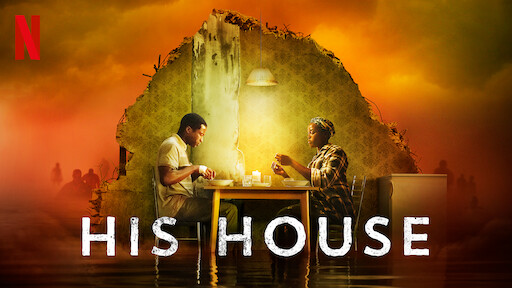
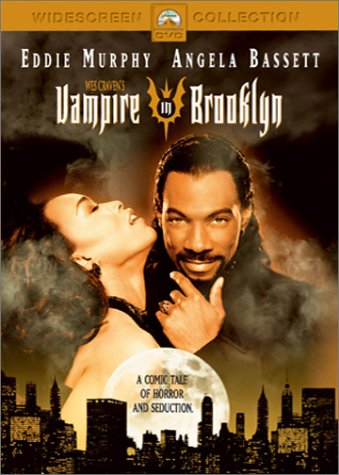
 to suck the life out of town. Vampire vows to wipe them out like vermin are all the more chilling because we recognize the gentrification and racist mentalities. What would the authorities care if vampires are pecking bad guys off the street in the Bronx? A wealthy white man writes a check so no one notices those made to disappear, and such a forgotten, downtrodden place is perfect for vampires who want to stay under cover. Friendships are tested when some want to do good for their community and others are right to be wary. Neighbors disbelieve the hear tell vamps dressed like Hamilton taking out the local thugs while humor alleviates suspenseful close calls – the vampire was just coming in to buy…sanitizer of course. Daytime nest explorations and homages to The Lost Boys accent the self aware genre winks while a bemusing montage establishes the lore herein complete with that cookie they hand out at church that doesn’t taste very good aka the “eucharist” and watching Blade. Single mothers try to keep their kids on the up, but the boys are trespassing for vampire proof and stealing holy water in a Sprite bottle. Skeleton keys, coffins, ringtones rousing the dead – what’s worse then being chased by vampires and caught in the backseat of the cop car? When their mothers come to get them but the vampire didn’t show up on your camera. Fun zooms for youthful actions and watchful eyes match creepy red lights, growls, and hypnotic kills as Haitian history preparations and shootouts don’t stop the undead. The kids take the crucifix off the wall and hope tia doesn’t notice, but the powdered garlic comes in handy and calling the Bronx a shithole is the last straw. Although a little short at under eighty-five minutes with credits, the swift solidarity doesn’t stray from its goal. Rather than underestimate the audience with stereotypical obnoxiousness, this refreshing contemporary take is great for young audiences as well as fans of wise and wise-cracking horror.
to suck the life out of town. Vampire vows to wipe them out like vermin are all the more chilling because we recognize the gentrification and racist mentalities. What would the authorities care if vampires are pecking bad guys off the street in the Bronx? A wealthy white man writes a check so no one notices those made to disappear, and such a forgotten, downtrodden place is perfect for vampires who want to stay under cover. Friendships are tested when some want to do good for their community and others are right to be wary. Neighbors disbelieve the hear tell vamps dressed like Hamilton taking out the local thugs while humor alleviates suspenseful close calls – the vampire was just coming in to buy…sanitizer of course. Daytime nest explorations and homages to The Lost Boys accent the self aware genre winks while a bemusing montage establishes the lore herein complete with that cookie they hand out at church that doesn’t taste very good aka the “eucharist” and watching Blade. Single mothers try to keep their kids on the up, but the boys are trespassing for vampire proof and stealing holy water in a Sprite bottle. Skeleton keys, coffins, ringtones rousing the dead – what’s worse then being chased by vampires and caught in the backseat of the cop car? When their mothers come to get them but the vampire didn’t show up on your camera. Fun zooms for youthful actions and watchful eyes match creepy red lights, growls, and hypnotic kills as Haitian history preparations and shootouts don’t stop the undead. The kids take the crucifix off the wall and hope tia doesn’t notice, but the powdered garlic comes in handy and calling the Bronx a shithole is the last straw. Although a little short at under eighty-five minutes with credits, the swift solidarity doesn’t stray from its goal. Rather than underestimate the audience with stereotypical obnoxiousness, this refreshing contemporary take is great for young audiences as well as fans of wise and wise-cracking horror.
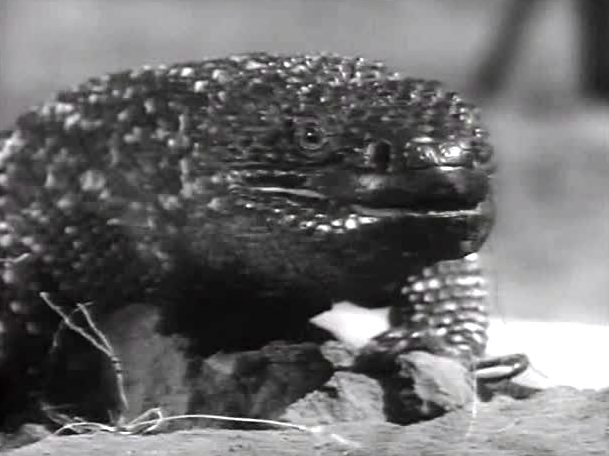

 productions before and after but is best known for Blackadder. Later, he studied history and has spent a few years working in heritage in Wales, UK. His wife Penny also works in heritage and his son William is studying film at University in the UK. As well as being a behind the scenes blogger, Simon is now considering going back into acting.
productions before and after but is best known for Blackadder. Later, he studied history and has spent a few years working in heritage in Wales, UK. His wife Penny also works in heritage and his son William is studying film at University in the UK. As well as being a behind the scenes blogger, Simon is now considering going back into acting.

 numerous science fiction, and horror magazines and anthologies. Born in Philadelphia, Pennsylvania, he moved to Appalachia in his 30s. He has three children, two who live in his native Pennsylvania, and one at home. Married to his lovely wife Leslie for twenty years, they live in a fairy tale town nestled in a valley by a river. Author of over 50 published stories, his Amazon Best Seller debut novel, I Never Eat…Cheesesteak, is available from Barnes and Noble, Amazon, and fine stores everywhere.
numerous science fiction, and horror magazines and anthologies. Born in Philadelphia, Pennsylvania, he moved to Appalachia in his 30s. He has three children, two who live in his native Pennsylvania, and one at home. Married to his lovely wife Leslie for twenty years, they live in a fairy tale town nestled in a valley by a river. Author of over 50 published stories, his Amazon Best Seller debut novel, I Never Eat…Cheesesteak, is available from Barnes and Noble, Amazon, and fine stores everywhere. 











 And the winner of the commercial spoof challenge….
And the winner of the commercial spoof challenge….

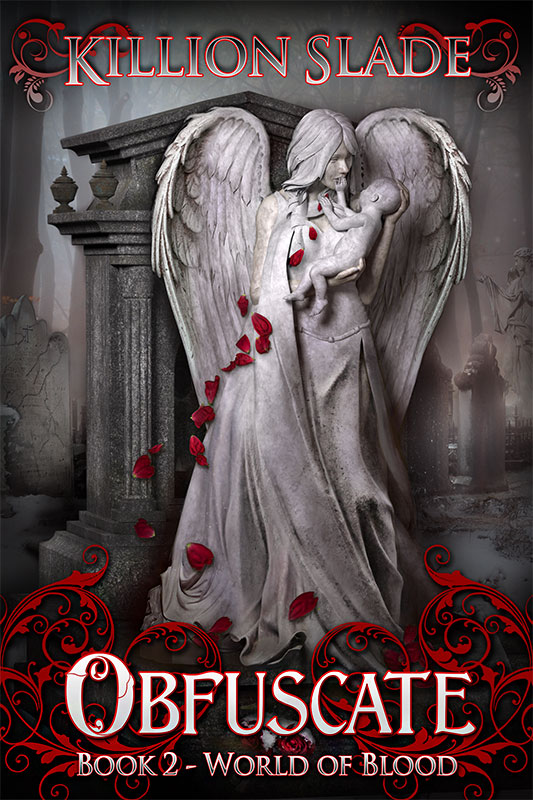



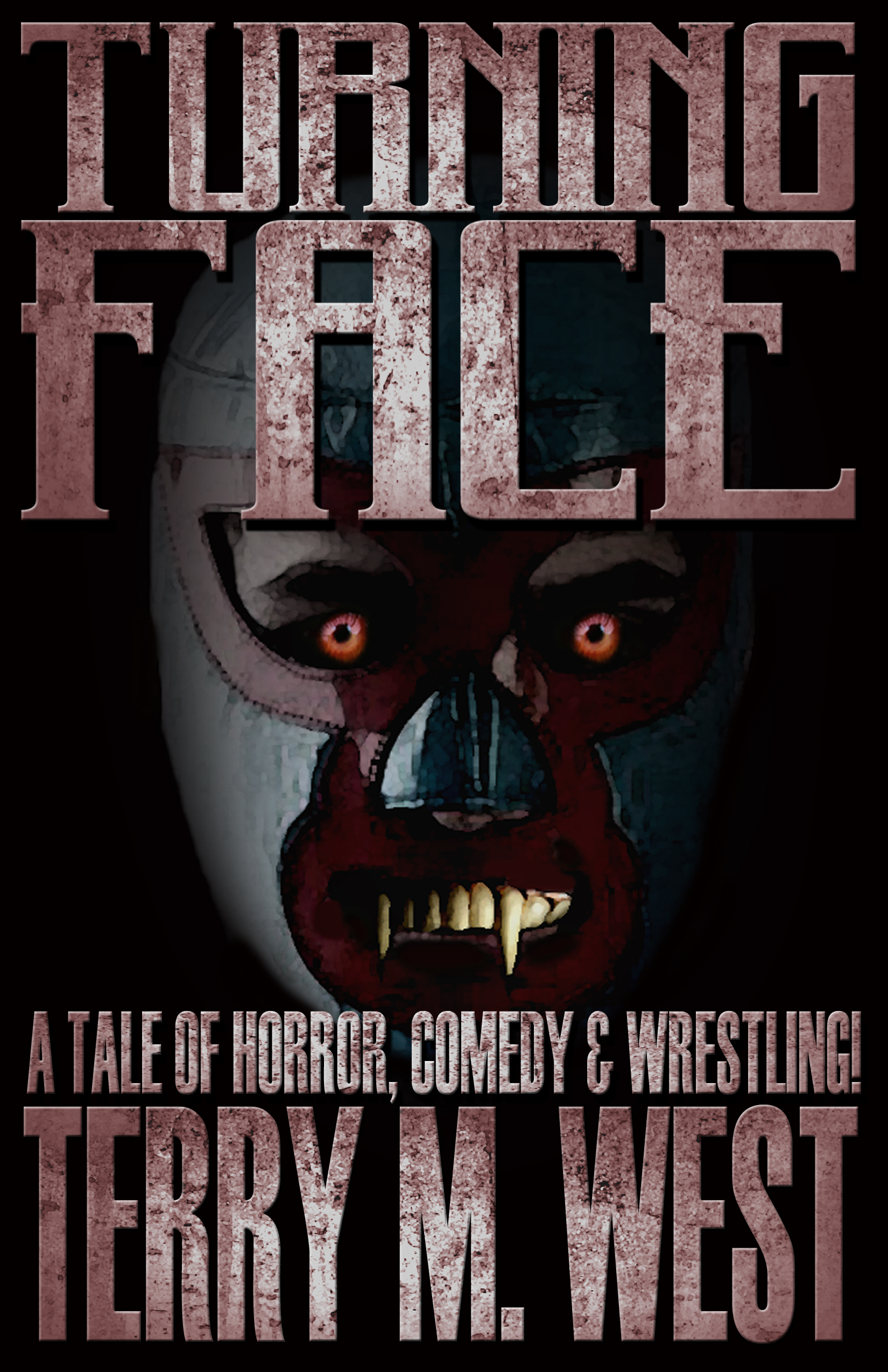
 blog.paxholley.net
blog.paxholley.net





